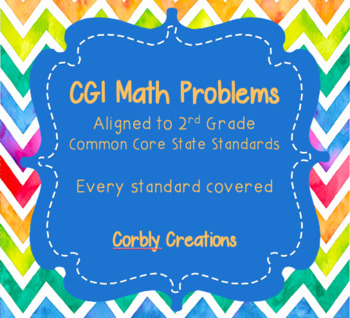100 CCSS 2nd Grade CGI Word Problems
- Zip
What educators are saying
Description
What is CGI?
The purpose of CGI math is to build problem solving strategies through math talk. Students will solve problems and then discuss and share their strategies in small groups. The students will then see a variety of strategies to solve the same problem. Once one problem is finished then they will move onto the second problem. The problems get more difficult each time. If they are able to complete all three problems, then they can attempt the extensions. Throughout working the problems, the students should hit a level of frustration. The idea is to persevere through and find strategies to solve even the most difficult problems. This is a great opportunity for students to learn from one another and the teacher acts only as a facilitator.
This set includes 4 CGI problems (each have 6 solving opportunities for a total off 600 solvable problems!) for each second grade CCSS standard.
This set can be used whole group or in small groups to facilitate deeper problem solving and math discussions.





